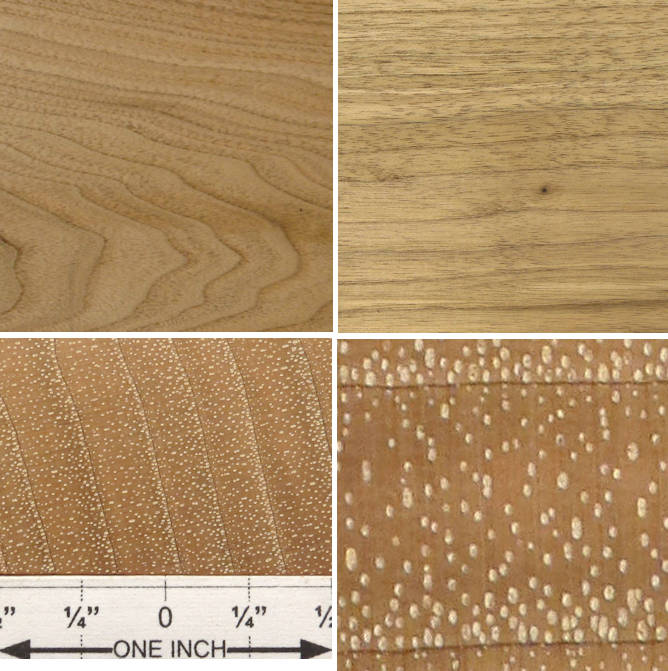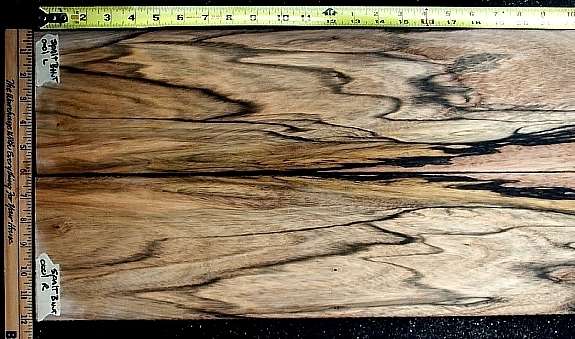the REST of the pictures on this page will give you a better overall feel for this wood

butternut / Juglans cinerea
5" x 5" flat cut, 5" x 5" quartersawn, 1" wide end grain, and a 1/4" x 1/4" end grain closeup. The fluted grain in the flat cut surface is a characteristic of butternut (although it doesn't occur in every piece)
Semi ring porous with medium sized sparse pores with vasicentric parenchyma, sometimes in radial multiples of 2 or 3. Growth ring boundaries are well delineated, marginal parenchyma is usually obvious, rays are present but are generally too thin to see even at 10X. It has diffuse-in-aggregates parenchyma which frequently cannot be seen even at 10X. Tyloses presence in the pores ranges from occasional to frequent but you will not likely see it with just shop level wood processing because the pores are too small for it to show up well at 10X without much finer end grain processing than the 1200 grit I use.
This is a close relative of walnut but it is generally lighter and softer than walnut and has slightly more graininess and is tan in color rather than the darker color of walnut.

FLUTED GRAIN IN BUTTERNUT



























































%201a%20s25%20plh.jpg)
%201b%20s25%20plh.jpg)
%201%20end%20grain%20s25%20plh.jpg)
%201%20end%20grain%20closeup%20s25%20plh.jpg)
%201%20end%20grain%20closeup%202%20s25%20plh.jpg)
%204c%20s25%20plh.jpg)
%203a%20s25%20plh.jpg)
%203b%20s25%20plh.jpg)
%204b%20s25%20plh.jpg)
%202a%20s25%20plh.jpg)
%202b%20s25%20plh.jpg)
%205d%20end%20grain%20closeup%202%20s25%20plh.jpg)
%205f%20facd%20grain%20closeup%202%20s25%20plh.jpg)
%205e%20facd%20grain%20closeup%20s25%20plh.jpg)







%201a%20s25%20plh.jpg)
%201b%20s25%20plh.jpg)
%201%20end%20grain%20s25%20plh.jpg)
%201%20end%20grain%20closeup%20s25%20plh.jpg)
%201%20end%20grain%20closeup%202%20s25%20plh.jpg)
%202a%20s25%20plh.jpg)
%202b%20s25%20plh.jpg)
%202%20end%20grain%20s25%20plh.jpg)
%202%20end%20grain%20closeup%20s25%20plh.jpg)
%202%20end%20grain%20closeup%202%20s25%20plh.jpg)
%203a%20s25%20plh.jpg)
%203b%20s25%20plh.jpg)
%203%20end%20grain%20s25%20plh.jpg)
%203%20end%20grain%20closeup%20s25%20plh.jpg)
%203%20end%20grain%20closeup%202%20s25%20plh.jpg)





%20pen%201a%20s50%20plh.jpg)
%20pen%201b%20s25%20plh.jpg)
%20pen%201c%20s25%20plh.jpg)

















































































































































































